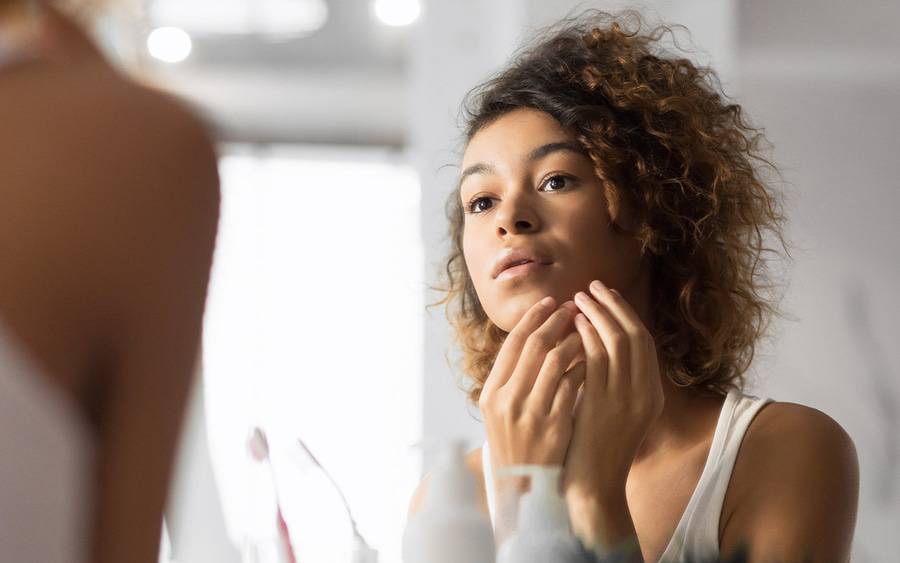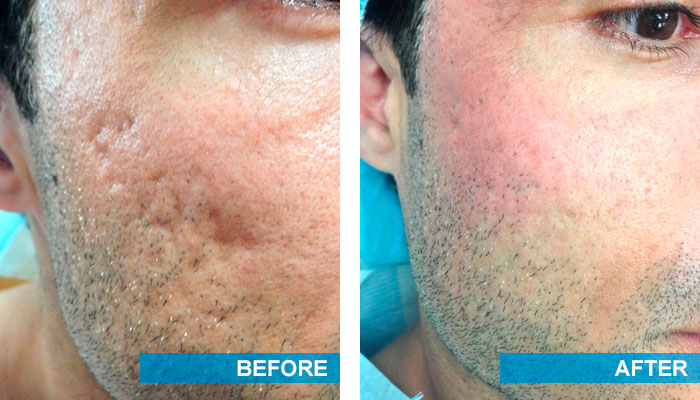Sensitive Skin? Find the Right Acne Scars Treatment for Your Demands
Sensitive Skin? Find the Right Acne Scars Treatment for Your Demands
Blog Article
Checking Out Skin Problems: Treating and identifying Acne Scars for Healthier Skin
Acne marks represent a significant problem for people seeking to keep healthy skin, as they can affect both look and self-worth. Recognizing the different types of marks, from atrophic to hypertrophic, is important for determining appropriate therapy choices.
Understanding Acne Marks

The body's all-natural healing procedure can result in either atrophic scars, which look like depressions in the skin, or hypertrophic scars, which are increased and arise from overflow of collagen. Furthermore, the mental toll of acne scars must not be underestimated; numerous people report sensations of embarrassment, stress and anxiety, and decreased self-worth. This psychological problem can influence social communications and overall lifestyle.
Resolving acne scars needs a thorough understanding of their formation and influence. Recognition of the potential for long-term repercussions related to unattended marks can motivate people to look for ideal therapies. Early intervention and effective administration methods can substantially boost skin look and boost emotional strength, stressing the relevance of recognizing the intricacies bordering acne scars.
Sorts Of Acne Scars
Acne scars can be classified right into unique types, each displaying special features and calling for details therapy methods. acne and acne scars treatment. The key kinds of acne scars include atrophic, hypertrophic, and keloid marks

Hypertrophic scars, in contrast, are elevated above the skin level and are the outcome of excessive collagen production throughout the recovery process. They generally continue to be within the boundaries of the initial acne sore. Keloid marks are similar however expand beyond the original injury website, forming larger, increased locations that can be unpleasant or itchy.
Recognizing these types of scars is essential for selecting proper therapy alternatives. Various scars may respond much better to particular treatments, such as laser therapies, fillers, or medical treatments, emphasizing the significance of a tailored technique to acne mark monitoring.
Recognizing Your Scars
Acne scars normally drop right into two classifications: hypertrophic and atrophic scars. These can even more be categorized right into ice-pick marks, boxcar marks, and rolling scars, each exhibiting unique features and calling for different methods for evaluation.
Hypertrophic marks, on the various other hand, are raised and occur because of extreme collagen manufacturing during the healing process. Recognizing the particular attributes of your marks-- such as depth, texture, and width-- is essential for proper recognition (acne and acne scars treatment). Additionally, consider the distribution of scars across your skin, as this can indicate the severity and period of the acne problem
Involving with a skin doctor can give beneficial understandings into the nature of your marks, assisting in the distinction between various kinds. A thorough understanding of your marks will inevitably bring about a much more tailored and efficient treatment read review plan, ensuring a more clear and healthier complexion.
Therapy Choices Available
Recognizing the details sort of acne scars existing on your skin prepares for checking out effective therapy options. Common kinds of acne scars consist of atrophic (depressed), hypertrophic (elevated), and post-inflammatory erythema.
For atrophic marks, options such as chemical peels, microneedling, and laser resurfacing are extensively utilized. Chemical peels make use of acids to remove the external layer of skin, advertising new cell development. Microneedling includes tiny needles that develop micro-injuries, stimulating collagen manufacturing. Laser resurfacing targets damaged skin cells, boosting texture and tone.
Hypertrophic scars can be treated with corticosteroid shots to flatten the mark or laser therapy to minimize redness and enhance look. Silicone gel sheets and pressure dressings might also help in taking care of increased marks.
On top of that, facial fillers can temporarily fill up in depressions from atrophic marks, while medical excision may be ideal for serious situations. Each treatment choice has its advantages and considerations, making it vital to speak with a skin doctor. They can offer tailored suggestions based upon the kind and severity of your scars, in addition to your skin kind and total health.
Tips for Prevention
Reliable prevention approaches can considerably minimize the chance of developing acne scars. The first step is to preserve a constant skin care regimen that consists of mild cleaning, peeling, and hydrating. Making use of non-comedogenic products helps avoid blocked pores, which can worsen acne. Furthermore, integrating topical treatments consisting of salicylic acid or benzoyl peroxide can properly decrease and take care of outbreaks swelling.
Preventing need to choose or pop acne sores is vital, as this can cause deeper skin damages and raise the danger of scarring. Instead, consider making use of a chilly compress or non-prescription treatments to read this reduce swelling and soreness.
Sunlight protection is an additional crucial element of avoidance; ultraviolet (UV) rays can dim scars and prevent the healing process. Using a broad-spectrum sunscreen with at the very least SPF 30 daily can protect the skin and advertise even recovery.
Lastly, preserving a balanced diet regimen abundant in minerals, antioxidants, and vitamins supports skin wellness and healing. Remaining hydrated and taking care of anxiety levels can likewise play a significant duty in decreasing acne flare-ups. By implementing these methods, individuals can considerably decrease their possibilities of creating acne scars.
Verdict
In conclusion, understanding and recognizing acne scars is necessary for effective therapy and achieving much healthier skin. Various sorts of acne marks, including hypertrophic and atrophic marks, require certain treatments tailored to private needs. Therapy alternatives range from chemical peels and microneedling to corticosteroid shots, stressing the importance of consulting a skin specialist. In addition, adopting a gentle skin care regimen and protecting the skin from UV exposure can substantially add to the prevention of further scarring and general skin health and wellness.
The body's all-natural recovery procedure can result in either atrophic marks, which show up as anxieties in the skin, or hypertrophic marks, which are increased and result from overflow of useful link collagen. They are more separated right into 3 subtypes: ice choice scars, boxcar scars, and rolling scars. Acne scars typically fall into 2 groups: hypertrophic and atrophic marks. These can better be identified right into ice-pick marks, boxcar scars, and rolling scars, each exhibiting distinct characteristics and calling for various approaches for analysis.
Numerous kinds of acne scars, including atrophic and hypertrophic scars, necessitate specific interventions tailored to individual demands.
Report this page